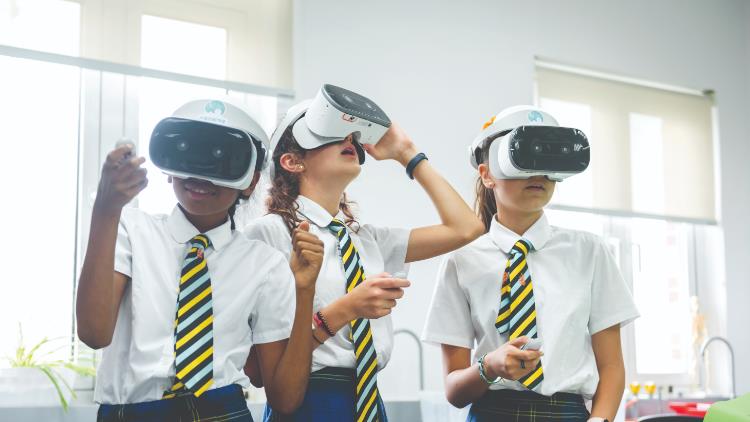Wellington College International Shanghai
Wellington College International Shanghai has invested in two separate types of virtual reality equipment for specific VR-based lessons and activities. The college bought a large number of VR headsets and a smaller number of mixed reality headsets combined with Asus gaming laptops to allow us to create content.
During the Arts Festival this year our art department produced a video featuring Year 13 pupils who talked about a series of art pieces: ‘Mona Lisa’ by da Vinci, ‘Starry Night’ by Van Gogh and ‘The Birth of Venus’ by Botticelli.
The video was then used to introduce pupils to the artworks before they used the VR headsets to experience these pieces using the Arts Plunge app, which allowed them to see the artwork reimagined in 3D. The concept behind this approach was that it should allow pupils to shift their perspective and consider art from a new angle, both literally and metaphorically. This ability to see the work up close and in 3D was something we couldn’t have created without the VR equipment.
Our art department’s next phase in VR adoption is to use the mixed reality headsets and hand controls to allow pupils to create virtual 3D models that can then be physically printed by our 3D printers. This is currently being trialled with Year 11, who are using Google Blocks and SculptrVR from the Steam Store to create inspirational works in a completely free and open workspace.
These initial works are then taken as a 3D model, and slicing software supports are added to allow the model to be printed. As with most lessons, the teacher works with the pupils to challenge their art, keeping their focus on the artistic concept and what they’re attempting to do. The VR, in this case, works as a new medium in which traditional skills can be enhanced and further developed.
At present we’re slowly taking VR from an interesting add-on to a mainstream tool. Alongside the sculpture work, we’re capturing video in 360 degrees using the school’s extensive bank of 360 cameras and underwater cameras, enabling pupils to create their own VR experiences. As we expand this bank of resources, we’ll be able to provide guided experiences for pupils in an increased range of environments and places they otherwise wouldn’t be able to explore.
James Dyson, ICT teacher
